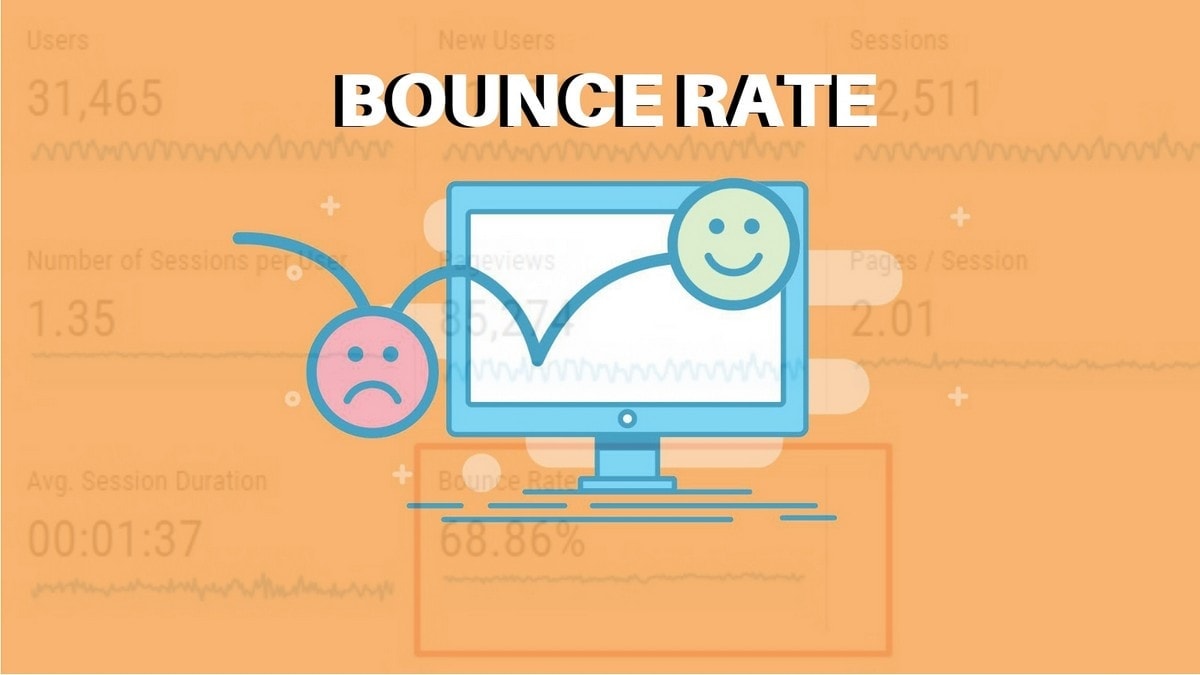
How To Calculate Bounce Rate?
How To Calculate Bounce Rate?
When a website is created for a brand, the main aim is to attract traffic on the website. The advertisers and the brand owner take so many steps and make so many strategies in order to increase traffic on the website. In doing so, it is important to keep track of a number of things that can help in measuring a number of elements such as the behavior of the visitors, their reactions, and so on.
Measuring these elements can help the site owners to work on them even more in order to get even better results. Among various terms that are being used in digital marketing, one of the most common ones is the bounce rate. Knowing how to calculate bounce rate will decide the success of your marketing campaign.
Bounce rate is also said to be the easiest one to understand even by someone who is not much aware of digital marketing and in this post, we will be diving deep into its world and understand its key idiosyncrasies and significance.
Table of Contents
Bounce Rate Explained
So in order to understand how to calculate the bounce rate, it is important to understand the term bounce rate first.
What is Bounce Rate?
When a visitor visits a website, the website owner expects some activities to be done by the visitor. It can be a transaction, a comment on the site, or some other activity that can prove the existence of the visitor on the site a few minutes back. These are the potential customers of the website. But on the other hand, there are a few of the visitors who may visit the website, take a tour of the whole site and then leave the site without any such activities or interactions. The rate at which they are leaving your site is termed as bounce rate.
Hence, it is can be said in a simpler term that bounce rate is the calculation of the number of visitors who are visiting the website but is not doing anything productive and leaving the site.
Why do visitors Bounce from your site?
There can be a number of reasons for this such as visiting the wrong website, any personal issue of the visitor and so on.
But one of the major problems that can stand up is the mistake that has been committed from the side of the website. There can be a number of times when the website is not able to impress the visitor to such an extent that the customer can think of doing something productive on the site.
Based on the bounce rate calculated, Google analytics checks out the faults on the website to reduce the bounce rate. Also, there can be other reasons such as the fault of the company’s products and many more. Whatever it is, depending upon the bounce rate, measurable steps are taken to improve the conversion rate.
Some of the factors that play a key role in the increase in bounce rate are-
- Intent of user
- Type of your website
- Type of your landing page
- Type of content used by you
- Quality of your landing page
- Quality of traffic you are targeting
- Type of the visitor
- Type of the device, etc.
Any of these things can be the reason behind the bouncing of visitors from your site. Let us now have a look at the calculation of bounce rate-
How To Calculate Bounce Rate?
After you have understood the basic concept of bounce rate, it will be much easier for you to understand the way to calculate bounce rate. Calculating the bounce rate is quite easy if you have the proper data by your side.
In simpler terms, it can be said that the bounce rate is calculated by dividing the total number of visitors bounced by the total number of visitors visiting the website.
How are the ways the visitors get bounced from the website?
- The visitor may lose interest in your site and may click on a link of some other site soon,
- The visitor clicks on the back arrow in place of going ahead,
- The visitor replaces the URL of your website by a new one and presses enter,
- The visitor closes the tab that has your website opened.
The Relation Between Bounce Rate And Exit Rate
Along with the bounce rate, it is also important to have a check at some other terms such as the exit rate.
A number of people consider the bounce rate and the exit rate to be the same concept. But there is a minor yet strong point that differentiates both of them.
Bounce rate is measured by dividing the number of people who have left the website without interactions by the number of people who have visited the website.
The exit rate is measured by dividing the number of visitors leaving the website after checking out a particular page by the number of people visiting the website. Here, it does not matter how many pages the visitor has visited in that particular session.
Thus, it can be said that all bounces can be exits but all exits cannot be bounced.
This is because some of the exits can be a good sign for the website such as when a visitor leaves the transaction page after making a transaction in an e-commerce site. But on the other hand, the bounces are not good signs for the websites. This is the reason when there is a high bounce rate noticed, the mistakes are searched so that they can be corrected and the bounce rate of the website can be reduced down.
Average Bounce Rate
It is quite difficult to come up with an average bounce rate.
This is because a bounce rate that may be high for a company may be low for some other company. Also, based on this assumption, there are also some bounce rates that can be good for the company.
In normal terms, it has been said that the bounce rate defines the performance of a website. Anything above 50% is a sign that the website is not performing well and hence things need to be done to improve the working of the website.
On the other hand, having a lower bounce rate is also not considered to be good. A bounce rate that is lower than 20% denotes that something is fishy in the website.
There are a number of factors on which the bounce rate can depend. For example, the type of website that is being examined! For example, if the bounce rate of an e-commerce website is high, it can be a matter of concern because no activities have been done. But on the other hand, if it is a site of online dictionary, having a high bounce rate does not matter because here there is no such requirement of actions by the visitors.
Similarly, it may happen that a website is all about knowledge. Here the bounce rate cannot determine the performance of the website. Here the time spent by the visitors on a particular page defines it. If a visitor does not wait even for a minute, it is a bounced visitor, one the other hand, if the visitor has spent a good amount of time on the site, this visitor is not bounced.
How To Calculate The Bounce Rate Of Your Website?
Calculating the bounce rate of your website is not a difficult task because you have all the data that is required in the calculation method. The data can be easily acquired from the Google Analytics of the website.
- You just need to sign in to the Google Analytics of your website and need to click on the tab of ‘Audience Overview’.
- Here you will get a range of information and metrics of the different information.
- Here also you will come across the bounce rate of the website as a whole and also of per page. You can select the exact option to know the details that you wish to know.
- The details of the bounce rates will be available in front of you in terms of percentage and also in terms of a graph that indicates the bounce rate of a defined time period that you have selected. You can make changes in the time period from the top of the screen.
- To know the bounce rate of the individual pages, you need to click on ‘Behavior’, and then ‘All Pages’.
- Here you can select the page that you wish to check in details. This bounce rate is also defined in the same way how the bounce for the whole website has been provided by the analytics.
Let us now dive deep into some easy ways to reduce Bounce Rate-
Tips to Reduce Bounce Rate
- Adjusting the bounce rate of your site by calculating the time spent on your site page
- You should opt for reducing bounce rate of those pages that are in profit index
- You should not target those keywords or channels that are either sending low-quality traffic
- Use landing pages that can give the exact answer to your visitors’ query
- Use landing pages upon which your CTAs are adeptly displayed, plus your CTA should also be relevant to your landing page
- Use content that your users can consume in short span of time
- Your landing pages should be appealing and load quickly
- Your pages should create a curiosity to explore further in the minds of site visitors
Conclusion
Until and unless you do not have a report of what is happening, you cannot improve on your activities. Google Analytics offers you with such terms and data that can help you in knowing about different options such as the bounce rate of the website.
The bounce rate is known to provide you an insight about how your website is performing. Based on this insight, you can make the necessary changes to your website or your company strategies. Also, it is important to know some of the exceptions of bounce rate.
Hence, having a piece of detailed knowledge about bounce rate is important, so that you can judge them currently and also understand the status of the website in the right way.










